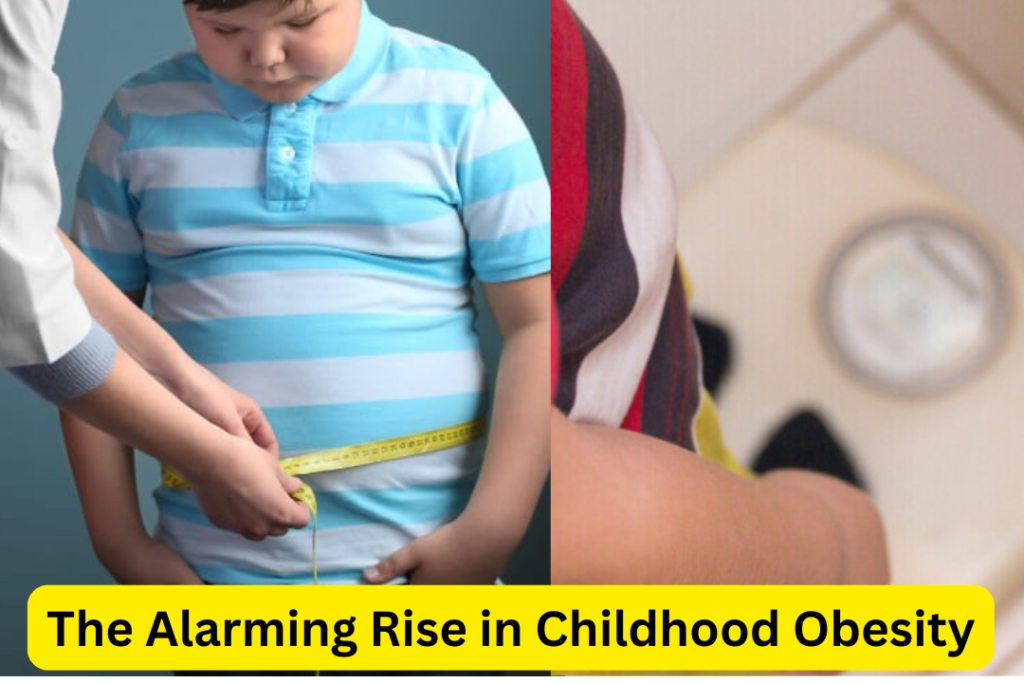Growing Epidemic of Obesity Among Children
Childhood obesity: This is a condition found in a child, whereby he or she is registered to be highly overweight according to his or her age and height. It is described, based on Body Mass Index, as an emerging concern in childhood obesity. Obesity prevalence for children in the age group from 5 to 19 years has increased tenfold since 1975, and in 2016 over 340 million children fell into either underweight or obesity categories.
Totally at variance with a trend of the developed world, obesity rates among children and adolescents are sharply on the increase–notably in the lower- and middle-income nations, particularly in cities.
Consequences extend far beyond the health and mental well-being domains: quality of life.
Causes and Contributing Factors to Childhood Obesity
Childhood obesity is a multifaceted condition, with a sensitively sensitive response from genetic, environment, and behavioural factors.
1. Diet habits
Processed and Ready Foods: There is more nutrient-less food, such as candies, soft drinks, and fast foods that are consumed in more calories. These foods contain high quantity unhealthy fats, sugars, and salt that are most likely to gain weight.
- Portion Sizes: Increased portion sizes have been highly associated with increased calorie load among children.
- Nutritional Literacy: Most parents are oblivious or have minimal education on what would form appropriate healthy food habits that would alter the situation
2.Sedentary Behaviour
- Viewing Screens: The amount of time a child spends gazing on the small and big screens – TV, cell phone, video games – reduce activities and snacking.
- Less time for physical in School: Most schools reduced the time allocated for physical exercises; children have a lesser time for exercise
- Urban Living: Tends to lead to lack of outdoor safe areas to exercise.
3.Socioeconomic Factors
- Income Inequality: Poor households have tight budgets, thus end up consuming low-calorie food of poor nutritional value.
- Food Deserts: Hinterlands do not have easy access to fresh fruits and vegetables; poor dieting habits persist.
4.Genetical and Biological Causes
- Family History: Obesity is more prevalent in children of obese parents primarily due to genetic vulnerability and also because of the transmission of lifestyle.
- Early Life Factors: Antenatal or post natal period diet failure or fails to breast feed that causes obesity.
5.Psychological and Cultural Determinants
- Psychological Eating: Because of inability to cope up with low stress, anxiety or depression, people resort to over-eating as a mode to cope up with those psychological facts.
- Cultural Factors: Some believe that obesity is the sign of richness and wealth, and they avoid taking any efforts to remain healthy in weight.
Aftermath of Early Childhood Obesity

Physical, emotional as well as social determinants shape the immediate short-term as well as the long-term results of early childhood obesity.
1. Health Risk Factors
- Type 2 Diabetes: Obesity is the leading cause of type 2 diabetes in children.
- Heart Diseases: At the same time, high cholesterol and blood pressure bring about heart complications.
- Respiratory Disorders: Overweight children are more prone to asthma as well as other sleep apnea.
- Orthopedic Disorders: The additional load on the growth bones, and thus leads to an aching of joints and muskuloskeletal disorders.
Early Puberty Obesity leads to early puberty, and thus results in psychosomatic and hormonal issues.
2. Psychological Effects
Losing Self-Confidence Obese children are always bullied and become indulged in low self-esteem and lose confidence due to social stigma.
Psychiatric Conditions Resulting from Obesity Issues Emotional trauma has been linked to have a role in psychiatric conditions resulting from obesity issues.
3. Long-term Effects
Adult Obesity Obese children are at a larger risk of growing and becoming adults with the same habits.
- Cronic Diseases: With obesity, risks associated with disease conditions such as diabetes, heart diseases, cancers, among many others increase with years.
Acting to Counter Childhood Obesity A Call to Action
Childhood obesity calls for multifaceted interventions from family, school communities as well as from the government.
1. Teach Healthy Food
- Healthy Diets should be promoted: more fruits, vegetables, whole grains, lean proteins, and healthy fats.
- Less Soda and Junk Food: More fluid intake, such as water, and healthy snack foods.
- Home Prepared Food: In general, home prepared food is less bad compared to the restaurant or packaged food.
- Health and Nutrition: Training Programmes. Educate the child and his family through involvement in teachers or public health programs about healthy eating habits.
2. Physical Activism
- Constitutional/Daily Exercise: Should take at least 60 minutes a day in physical activity. It can be in sports, dancing, or just playing outside.
- School Active Programs: It requires time for sports coaching or the opportunity to be part of physical activities during the day of learning in schools.
- Cap Any Degree of Screen Time: It reduces the degree of screen time forces children into much more active-related activities.
3. Enabling Environments of Active Living
- Healthy Foods: The government should offer a subsidy on fresh fruits and vegetables and eliminate food deserts by making healthy, affordable foods
- Safe Play Places: All the investments one makes in these parks and playgrounds and other forms of play places that lead to a more active kind of life can be made in the neighbourhoods.
- Parents: Parents is the right role model for children and has a big role to play in the promotion of the environment for raising healthier children.
4. Policy Interventions
- Advertisement of Junk Food Regulation: The government can take a decision about banning advertisement of harmful foods in front of the children.
- School Meal Programmes: Introduction and implementation of policies of healthy school meal.
- Taxation of Soft Drinks: Taxation of soft drinks would discourage them from their use
5. Psychological and Emotional Factors
- Guidance Counselling: Psychological counselling support for children in the midst of obesity disorder
- Peer Support Groups: A peer group can help both children as well as families engage in mutual experiences and discuss plans.
Role of Awareness and Education
Perhaps the most significant change under this trend is the awareness over the increase in childhood obesity. Public health campaigns, educational programs, and media relations could do much to increase awareness about the dangers of obesity and measures required to prevent it.
It should be of the schools and healthcare professionals. Detection of an obese child should occur as soon as possible, coupled with expanding the reach requirement to the family as well. Ideally, completely informed parents on what is expected regarding healthy behaviours should facilitate a more positive initiative from parents in forming a healthy life.
Conclusion
Childhood obesity ranks among the fastest emerging global health problems. For an adult citizen, it goes much deeper than the risks associated with his physical well-being and affects his potential future for healthy living. It can be reversed if neccessary assistance at individual, familial, societal, and governmental levels toward concerted efforts is provided.
Encourage exercise and healthy eating. This will give our children a healthier atmosphere in which to grow into healthy, independent adults with self-confidence. Childhood obesity is preventable. Now is the time to act. It’s the best investment in the future of our children-and the world.
VISIT HOME PAGE



1 Comment
Thanks for sharing. I read many of your blog posts, cool, your blog is very good.